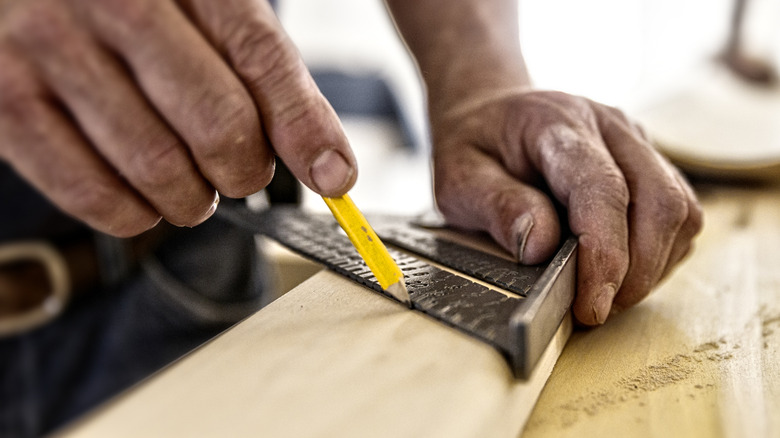Why Are Woodworking Pencils Flat?
Anyone who works in wood can tell you most carpentry gigs require access to a handful of tools with obvious, if vital, uses. One that's particularly easy to overlook is the woodworking pencil. After all, making accurate marks when cutting with tools like the DeWalt-invented radial saw is arguably the most important part of carpentry work. The pencil is so vital that many tool manufacturers actually make a special version of the pencil just for use by woodworkers.
Those specialty pencils are hardly unique in terms of the materials used to make them, with most manufacturers utilizing the standard wood and graphite combo. But if you've picked up a woodworking pencil before, you no doubt noticed that it was flat instead of the traditional round pencil shape. While holding flat pencils takes some getting used to, the design does make them ideal for use in the woodworking realm.
There's a very simple reason for the design: a flat pencil is less likely to roll away from you when you lay it down. That is more important for those in the woodworking realm, as some carpentry work is undertaken on inclined surfaces such as rooftops, and no roofer wants to climb up and down a ladder to chase after their pencil.
Other reasons that carpenter pencils are flat by design
Apart from the obvious rolling issue, there are other reasons for the specific carpenter's pencil design, too. The standard pencil is specifically 1/2" by 1/4", which gives you a quick measuring tool or spacer, say for when you're building a deck. The wide and flat approach also ensures that the pencil has a larger, thicker portion of lead, allowing for a thicker, more easily visible mark on wood they're looking to cut. The wide lead can also be turned sideways to make a thinner mark.
The wider, flatter design also makes it easier to handle a pencil when you are wearing heavy work gloves. Given that carpentry regularly involves the use of gloves, having a thick, easy-to-handle pencil is a bit of a necessity. Besides being easier to hold when you're gloved up, it is worth noting that, given that carpenter's pencils are often used to mark-up hard, coarse surfaces, the thicker lead also makes them more durable than a run-of-the-mill Number 2 model.
Given its usefulness on a worksite, it should hardly come as a surprise to learn that the woodworking pencil is not exactly a new invention. In fact, some believe the tool's flat design can be traced back to the earliest days of the pencil itself, sometime around the mid-to-late 16th Century. As with the standard pencil itself, it would seem those early designers mostly got the design right straight away, as the flat carpentry pencil has remained largely unchanged since.

